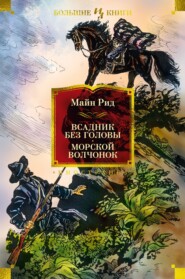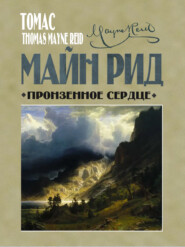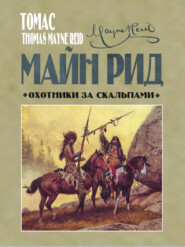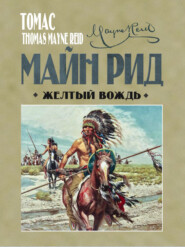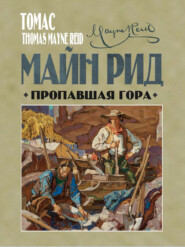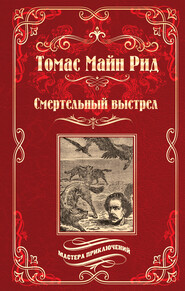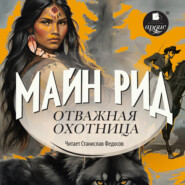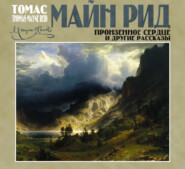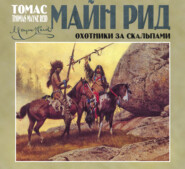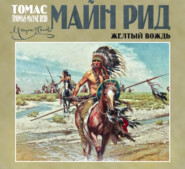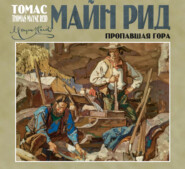По всем вопросам обращайтесь на: info@litportal.ru
(©) 2003-2024.
✖
The Death Shot: A Story Retold
Настройки чтения
Размер шрифта
Высота строк
Поля
Luckily for the assassin this tale-telling exhibition occurs under the shadow of the great cypress, whose gloomy obscurity guards against its being observed. But to counteract this little bit of good luck there chances to be present a detective that trusts less to sight, than scent. This is Clancy’s dog. As Darke presents himself in the circle of searchers collected around it, the animal perceiving, suddenly springs towards him with the shrill cry of an enraged cat, and the elastic leap of a tiger!
But for Simeon Woodley seizing the hound, and holding it back, the throat of Richard Darke would be in danger.
It is so, notwithstanding.
Around the blood-stained spot there is a pause; the searchers forming a tableau strikingly significant. They have come up, to the very last lagger; and stand in attitudes expressing astonishment, with glances that speak inquiry. These, not directed to the ground, nor straying through the trees, but fixed upon Dick Darke.
Strange the antipathy of the dog, which all observe! For the animal, soon as let loose, repeats its hostile demonstrations, and has to be held off again. Surely it signifies something, and this bearing upon the object of their search? The inference is unavoidable.
Darke is well aware their eyes are upon him, as also their thoughts. Fortunate for him, that night-like shadow surrounding. But for it, his blanched lips, and craven cast of countenance, would tell a tale to condemn him at once – perhaps to punishment on the spot.
As it if, his scared condition is not unnoticed. It is heard, if not clearly seen. Two or three, standing close to him, can hear his teeth clacking like castanets!
His terror is trebly intensified – from a threefold cause. Seeing no body first gave him a shock of surprise; soon followed by superstitious awe; this succeeded by apprehension of another kind. But he had no time to dwell upon it before being set upon by the dog, which drove the more distant danger out of his head.
Delivered also from this, his present fear is about those glances regarding him. In the obscurity he cannot read them, but for all that can tell they are sternly inquisitorial. En revanche, neither can they read his; and, from this drawing confidence, he recovers his habitual coolness – knowing how much he now needs it.
The behaviour of the hound must not pass unspoken of. With a forced laugh, and in a tone of assumed nonchalance, he says:
“I can’t tell how many scores of times that dog of Clancy’s has made at me in the same way. It’s never forgiven me since the day I chastised it, when it came after one of our sluts. I’d have killed the cur long ago, but spared it through friendship for its master.”
An explanation plausible, and cunningly conceived; though not satisfactory to some. Only the unsuspicious are beguiled by it. However, it holds good for the time; and, so regarded, the searchers resume their quest.
It is no use for them to remain longer by the moss-heap. There they but see blood; they are looking for a body. To find this they must go farther.
One taking up the hat, another the abandoned gun, they scatter off, proceeding in diverse directions.
For several hours they go tramping among the trees, peering under the broad fan-like fronds of the saw-palmettoes, groping around the buttressed trunks of the cypresses, sending glances into the shadowed spaces between – in short, searching everywhere.
For more than a mile around they quarter the forest, giving it thorough examination. The swamp also, far as the treacherous ooze will allow them to penetrate within its gloomy portals – fit abode of death – place appropriate for the concealment of darkest crime.
Notwithstanding their zeal, prompted by sympathising hearts, as by a sense of outraged justice, the day’s search proves fruitless – bootless. No body can be found, dead or living; no trace of the missing man. Nothing beyond what they have already obtained – his hat and gun.
Dispirited, tired out, hungry, hankering after dinners delayed, as eve approaches they again congregate around the gory spot; and, with a mutual understanding to resume search on the morrow, separate, and set off – each to his own home.
Chapter Seventeen.
A bullet extracted
Not all of the searching party leave the place. Two remain, staying as by stealth. Some time before the departure of the others, these had slipped aside, and sauntered off several hundred yards, taking their horses along with them.
Halting in an out-of-the-way spot, under deepest shadow, and then dismounting, they wait till the crowd shall disperse. To all appearance impatiently, as if they wanted to have the range of the forest to themselves, and for some particular reason. Just this do they, or at least one of them does; making his design known to the other, soon as he believes himself beyond earshot of those from whom they separated.
It is the elder that instructs; who, in addition to the horse he is holding, has another animal by his side – a dog. For it is the hunter, Woodley, still in charge of Clancy’s hound.
The man remaining with him is one of his own kind and calling; younger in years, but, like himself, a professional follower of the chase – by name, Heywood.
Giving his reason for the step he is taking, Woodley says, “We kin do nothin’ till them greenhorns air gone. Old Dan Boone hisself kedn’t take up trail, wi’ sich a noisy clanjamfry aroun him. For myself I hain’t hardly tried, seein’ ’twar no use till they’d clar off out o’ the way. And now the darned fools hev’ made the thing more diffeequilt, trampin about, an’ blottin’ out every shadder o’ sign, an everything as looks like a futmark. For all, I’ve tuk notice to somethin’ none o’ them seed. Soon’s the coast is clar we kin go thar, an’ gie it a more pertikler examinashun.”
The younger hunter nods assent, adding a word, signifying readiness to follow his older confrère.
For some minutes they remain; until silence restored throughout the forest tells them it is forsaken. Then, leaving their horses behind, with bridles looped around branches – the hound also attached to one of the stirrups – they go back to the place, where the hat and gun were found.
They do not stay there; but continue a little farther on, Woodley leading.
At some twenty paces distance, the old hunter comes to a halt, stopping by the side of a cypress “knee”; one of those vegetable monstrosities that perplex the botanist – to this hour scientifically unexplained. In shape resembling a ham, with the shank end upwards; indeed so like to this, that the Yankee bacon-curers have been accused, by their southern customers, of covering them with canvas, and selling them for the real article!
It may be that the Mississippian backwoodsman, Woodley, could give a better account of these singular excrescences than all the closet scientists in the world.
He is not thinking of either science, or his own superior knowledge, while conducting his companion to the side of that “cypress knee.” His only thought is to show Heywood something he had espied while passing it in the search; but of which he did not then appear to take notice, and said nothing, so long as surrounded by the other searchers.
The time has come to scrutinise it more closely, and ascertain if it be what he suspects it.
The “knee” in question is one which could not be palmed off for a porker’s ham. Its superior dimensions forbid the counterfeit. As the two hunters halt beside it, its bulk shows bigger than either of their own bodies, while its top is at the height of their heads.
Standing in front of it, Woodley points to a break in the bark – a round hole, with edge slightly ragged. The fibre appears freshly cut, and more than cut – encrimsoned! Twenty-four hours may have elapsed, but not many more, since that hole was made. So believe the backwoodsmen, soon as setting their eyes on it.
Speaking first, Woodley asks, —
“What d’ye think o’ it, Ned?”
Heywood, of taciturn habit, does not make immediate answer, but stands silently regarding the perforated spot. His comrade continues: —
“Thar’s a blue pill goed in thar’, which jedgin’ by the size and shape o’ the hole must a kum out a biggish gun barrel. An’, lookin’ at the red stain ’roun’ its edge, that pill must a been blood-coated.”
“Looks like blood, certainly.”
“It air blood– the real red thing itself; the blood o’ Charley Clancy. The ball inside thar’ has first goed through his body. It’s been deadened by something and don’t appear to hev penetrated a great way into the timmer, for all o’ that bein’ soft as sapwood.”
Drawing out his knife, the old hunter inserts the point of its blade into the hole, probing it.
“Jest as I sayed. Hain’t entered the hul o’ an inch. I kin feel the lead ludged thar’.”
“Suppose you cut it out, Sime?”
“Precisely what I intend doin’. But not in a careless way. I want the surroundin’ wood along wi’ it. The two thegither will best answer our purpiss. So hyar goes to git ’em thegither.”
Saying this, he inserts his knife-blade into the bark, and first makes a circular incision around the bullet-hole. Then deepens it, taking care not to touch the ensanguined edge of the orifice, or come near it.
The soft vegetable substance yields to his keen steel, almost as easily as if he were slicing a Swedish turnip; and soon he detaches a pear-shaped piece, but bigger than the largest prize “Jargonelle.”
Holding it in his hand, and apparently testing its ponderosity, he says:
“Ned; this chunk o’ timmer encloses a bit o’ lead as niver kim out o’ a rifle. Thar’s big eends o’ an ounce weight o’ metal inside. Only a smooth-bore barrel ked a tuk it; an’ from sech it’s been dischurged.”
“You’re right about that,” responds Heywood, taking hold of the piece of wood, and also trying its weight. “It’s a smooth-bore ball – no doubt of it.”
“Well, then, who carries a smooth-bore through these hyar woods? Who, Ned Heywood?”






